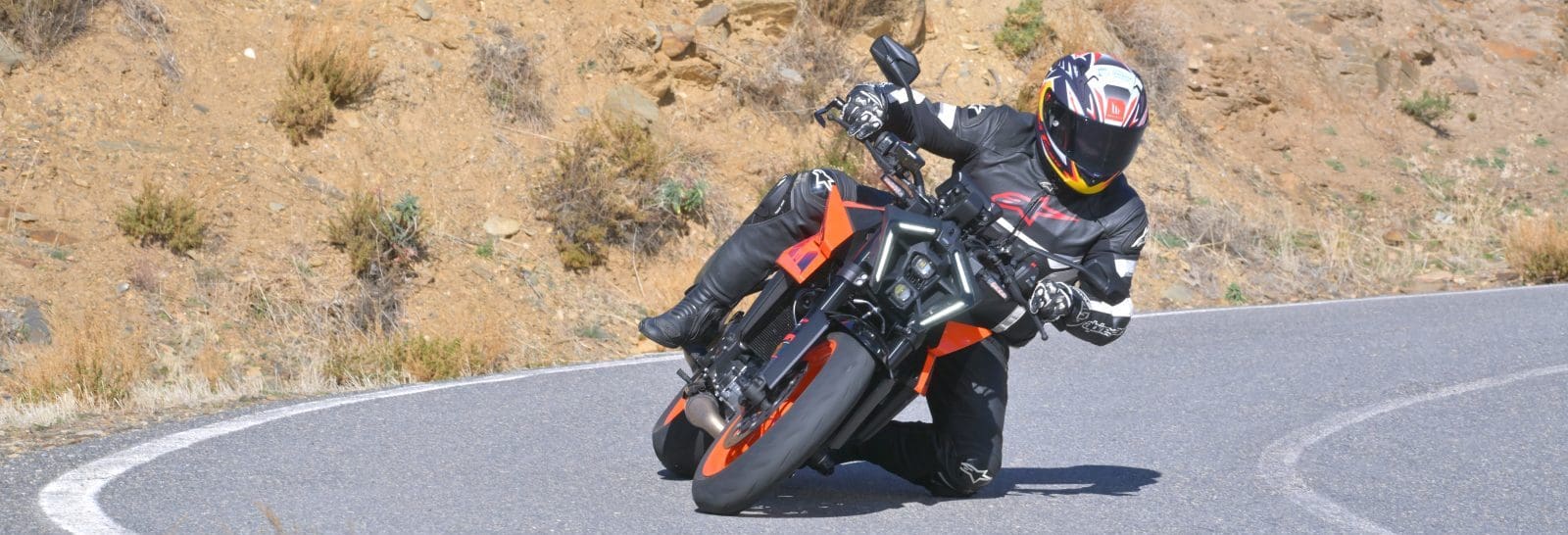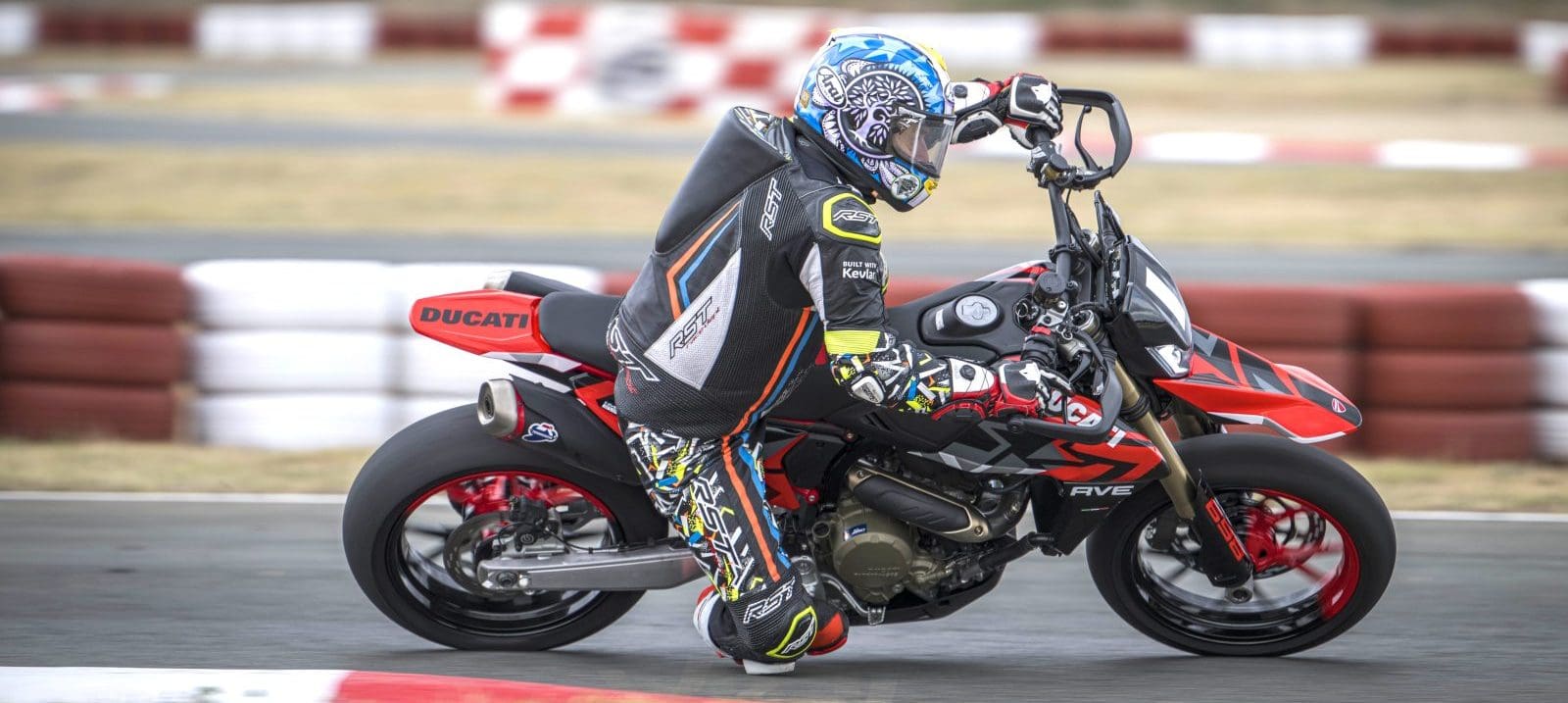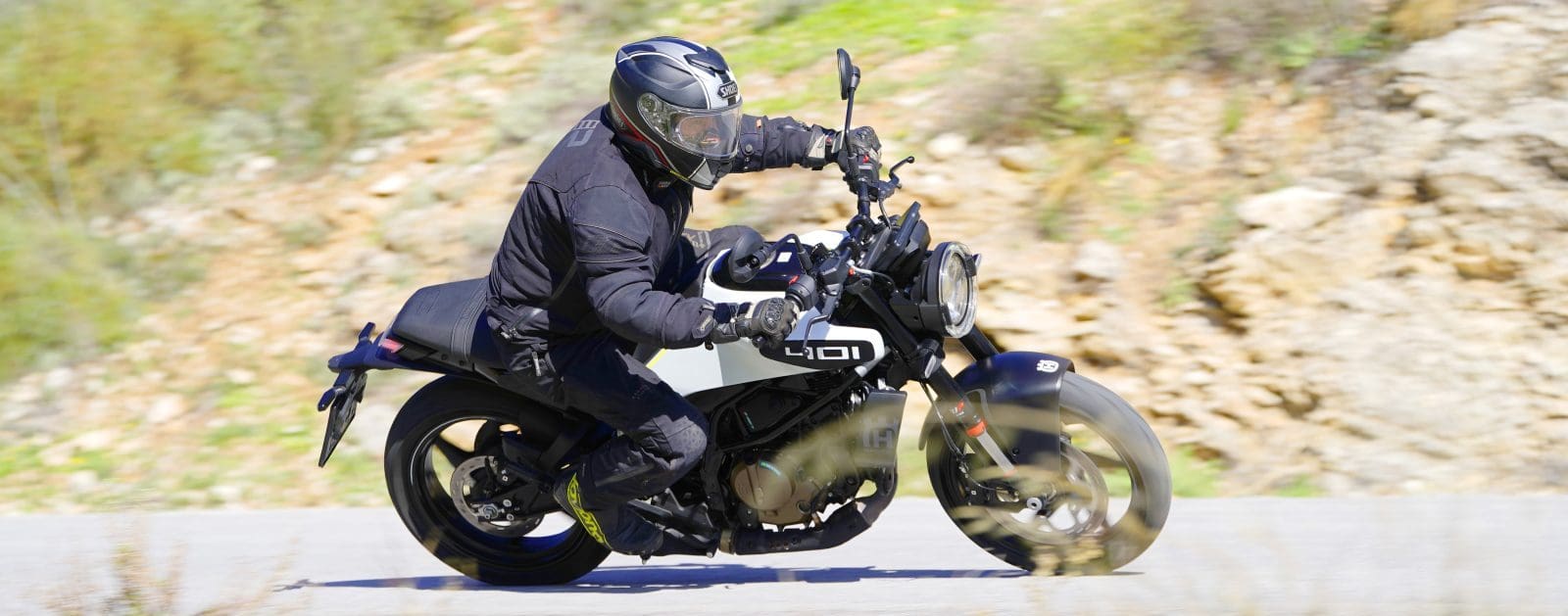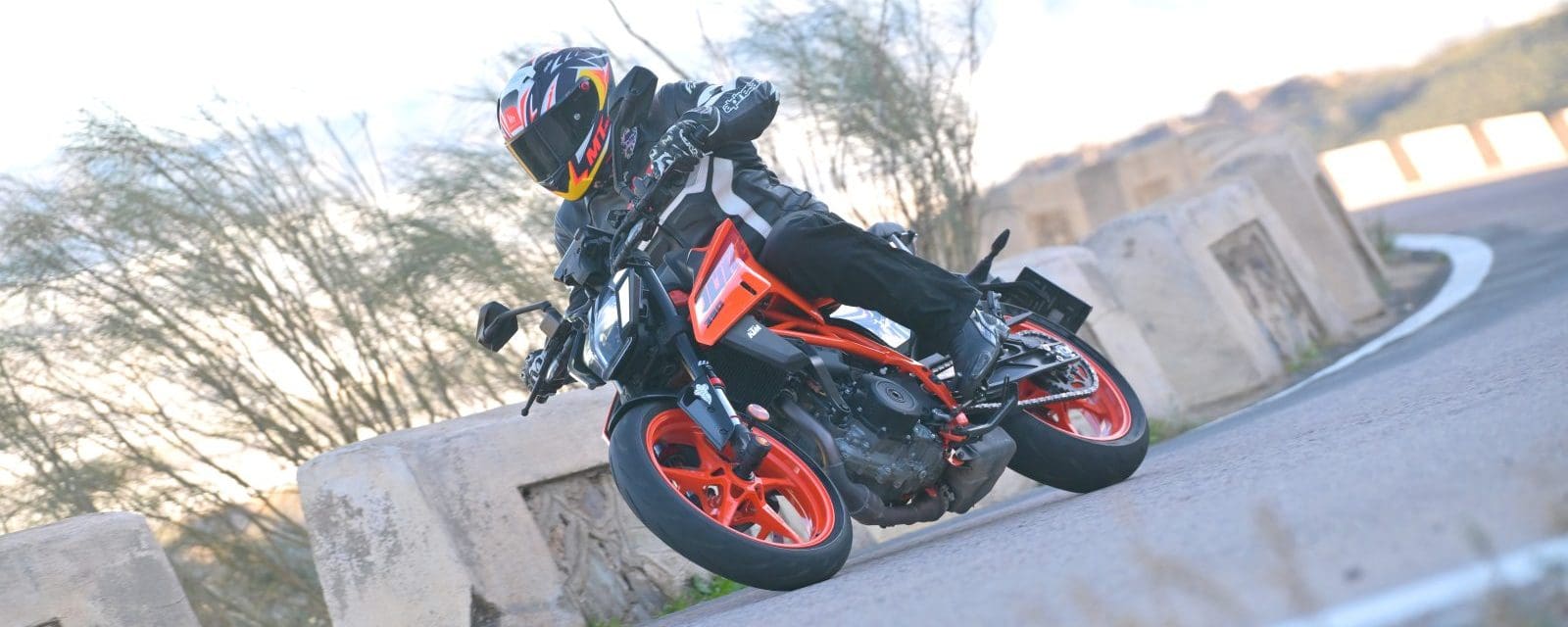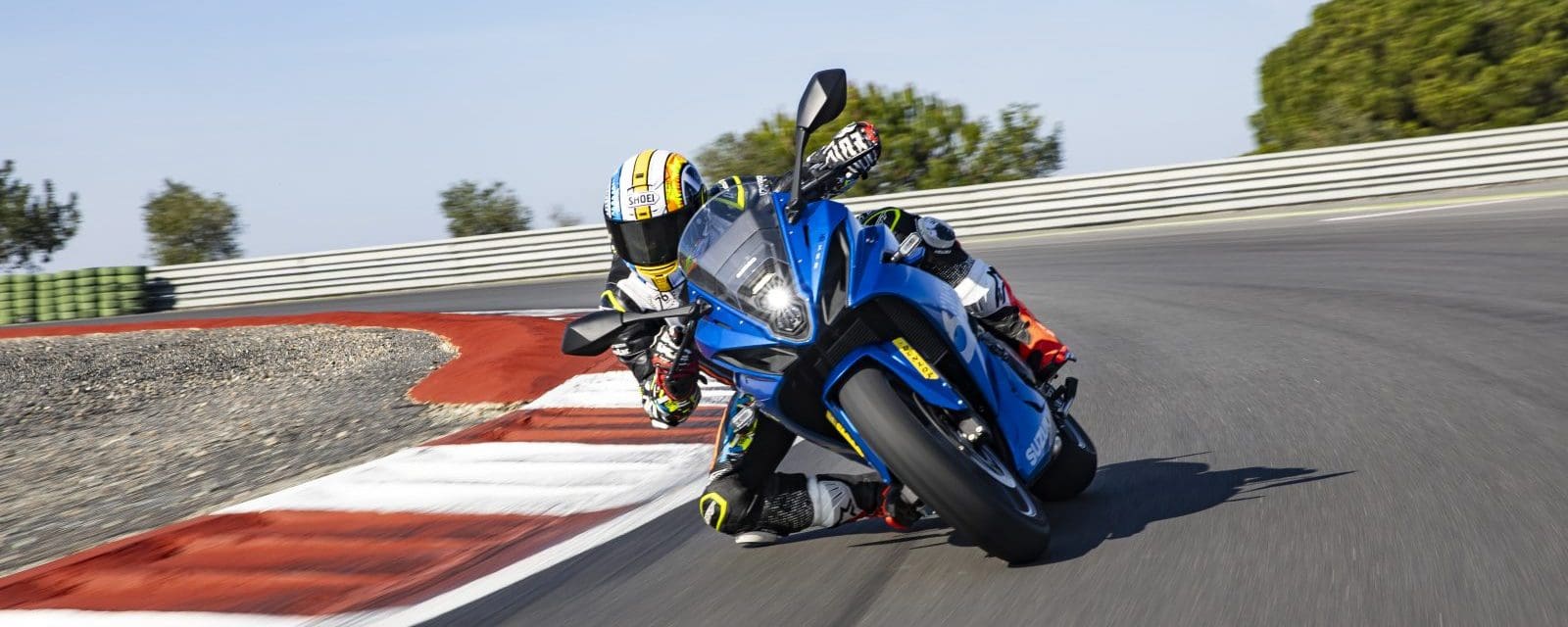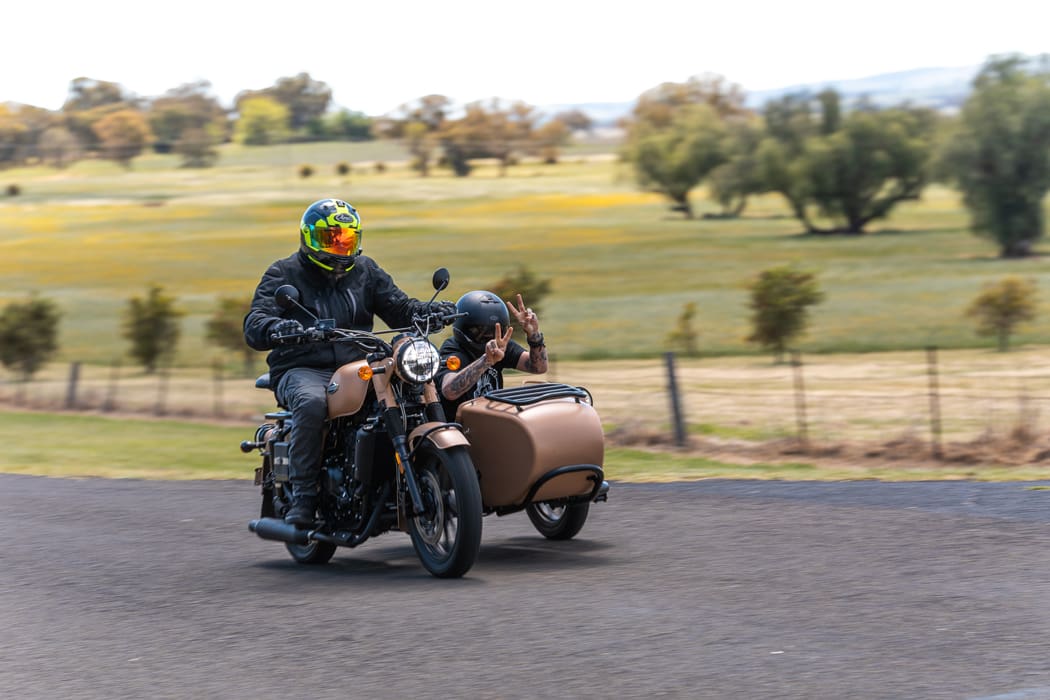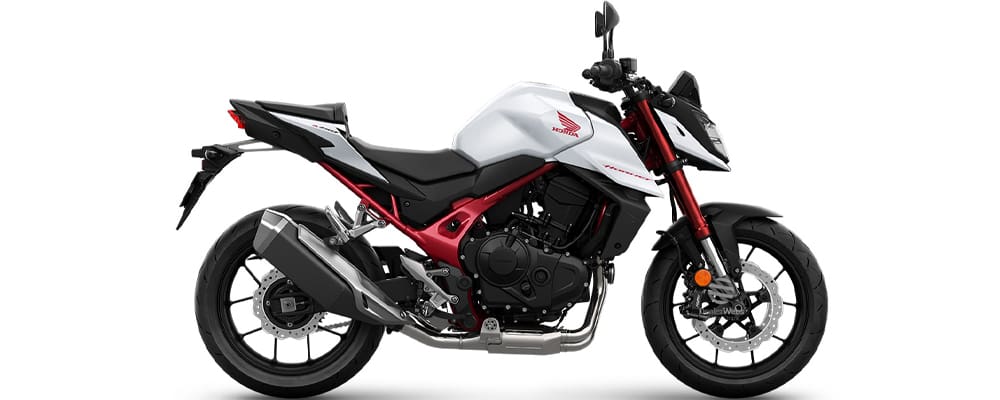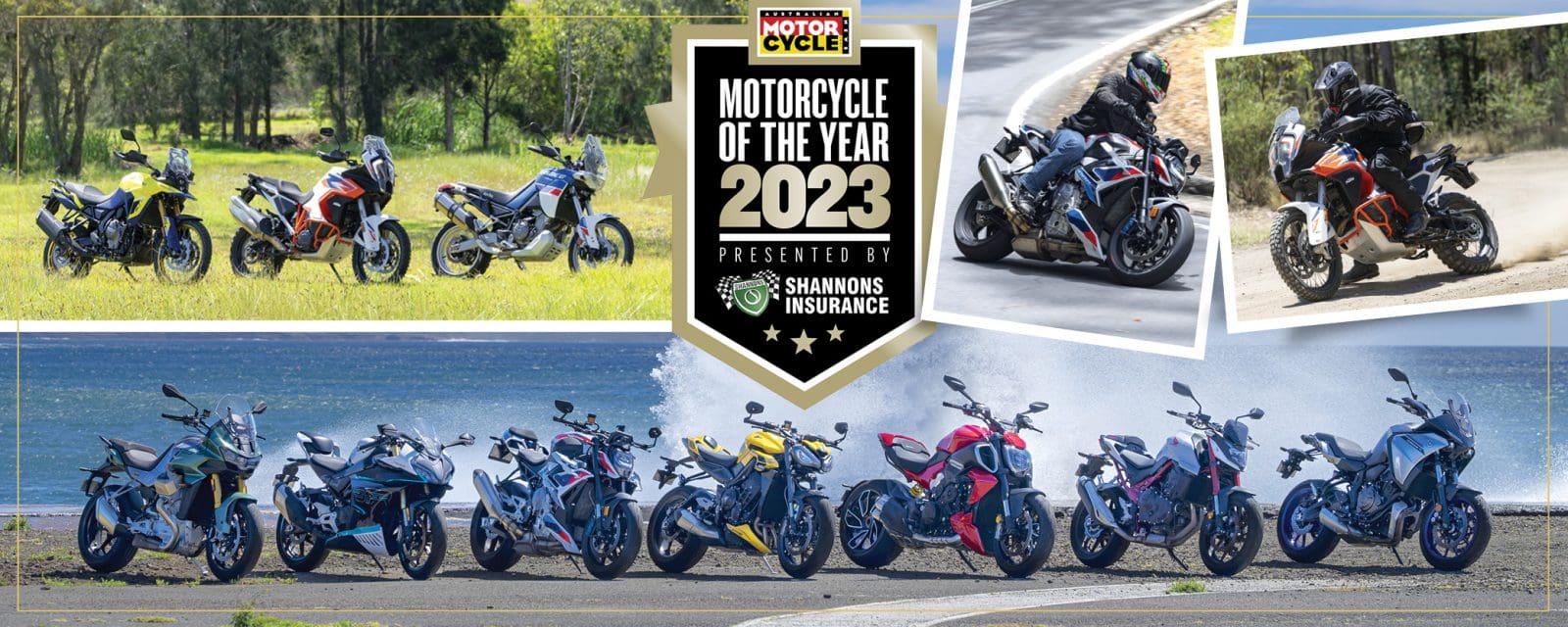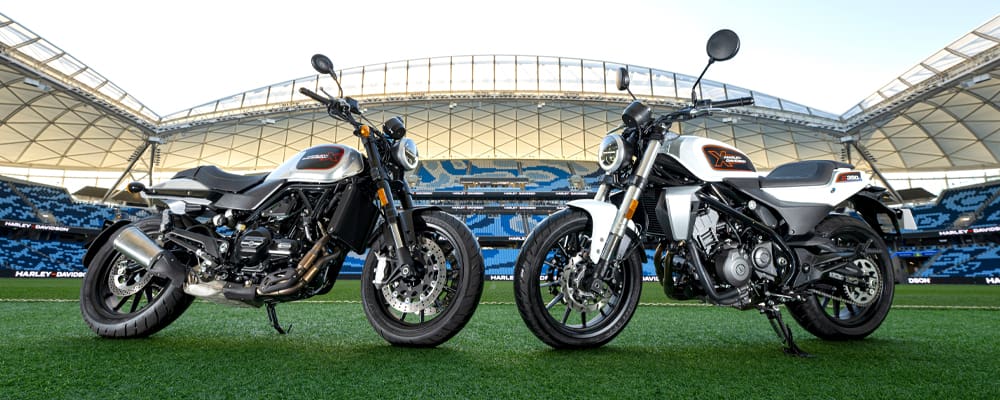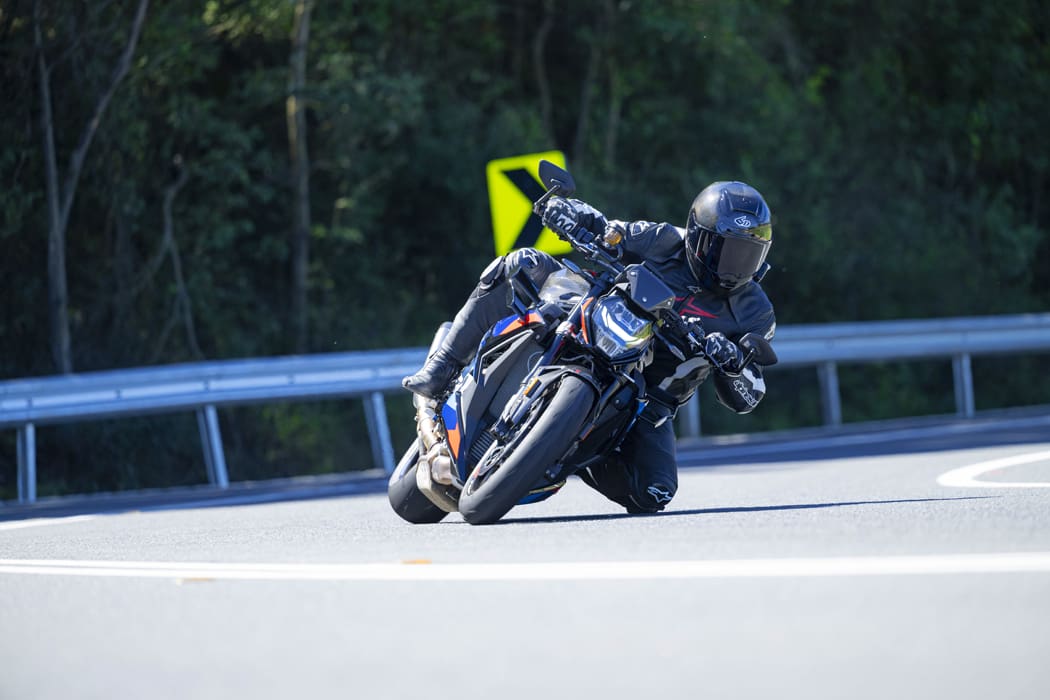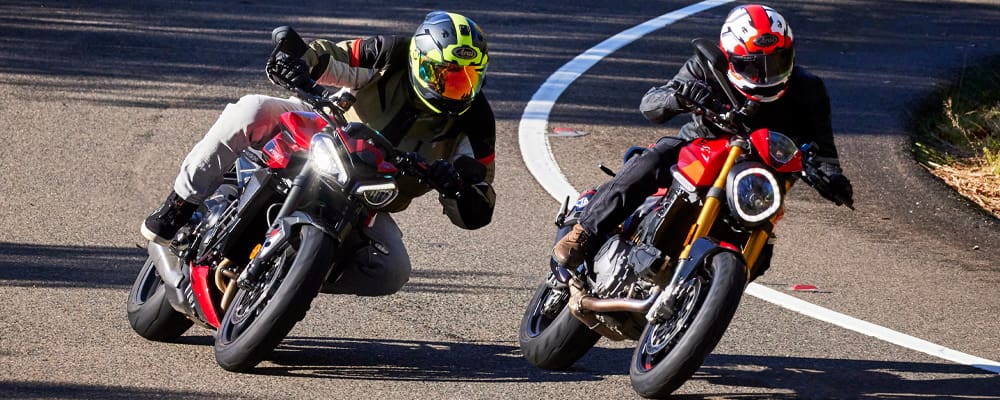Following the launch last year of the naked middleweight GSX-8S, Suzuki now enters the competitive middleweight sportsbike class with the GSX-8R. The 8R shares the same torquey 776cc parallel twin as the 8S but receives an uprated chassis featuring new Showa suspension front and rear, as well as a sporty new look.
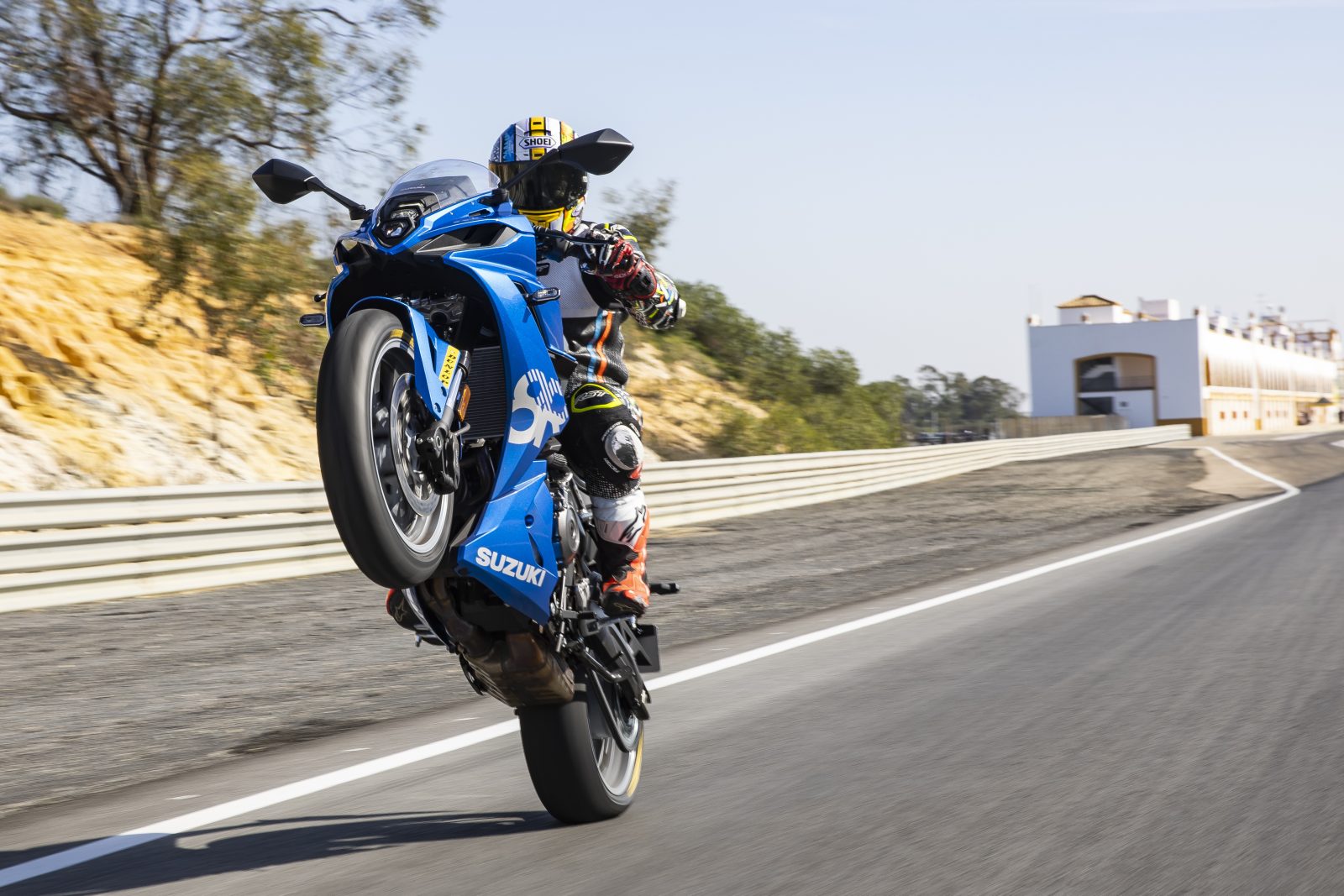
The GSX-8R comes with a quickshifter, electronic rider aids and riding modes. While the footpeg and seat position stays the same as the GSX-8S, the R version gets lower ’bars. The 61kW (82hp) GSX-8R is aimed at a wideaudience, from the commuter to the occasional trackday rider or, as Suzuki puts it, “the GSX-8R can be a commuter, a trackday bike or a sports-tourer”. Unlike the much-missed GSX-R600 and GSX-R750, which have now vanished from Suzuki’s line-up, the 8R is first and foremost a roadbike that can also be taken to the track, as we found out at the recent world launch.
The all-new GSX-8R certainly catches the eye as it glistens in the early Spanish sunlight that’s bathing the Circuito Monteblanco pitlane. First impressions are of a handsome, compact and well-proportioned machine. The finish is clean and pleasing. There’s a European look that feels right, though I’m sure the double stacked LED headlights might split opinions. It’s immediately apparent the GSX-8R is heavily based on the naked GSX-8S, which is an excellent starting point. From the fuel cap backwards it has the same distinctive subframe and rear-end componentry as its naked sibling, including the same 180-section Dunlop RoadSmart2 rear tyre. A new Showa shock is the only significant difference.
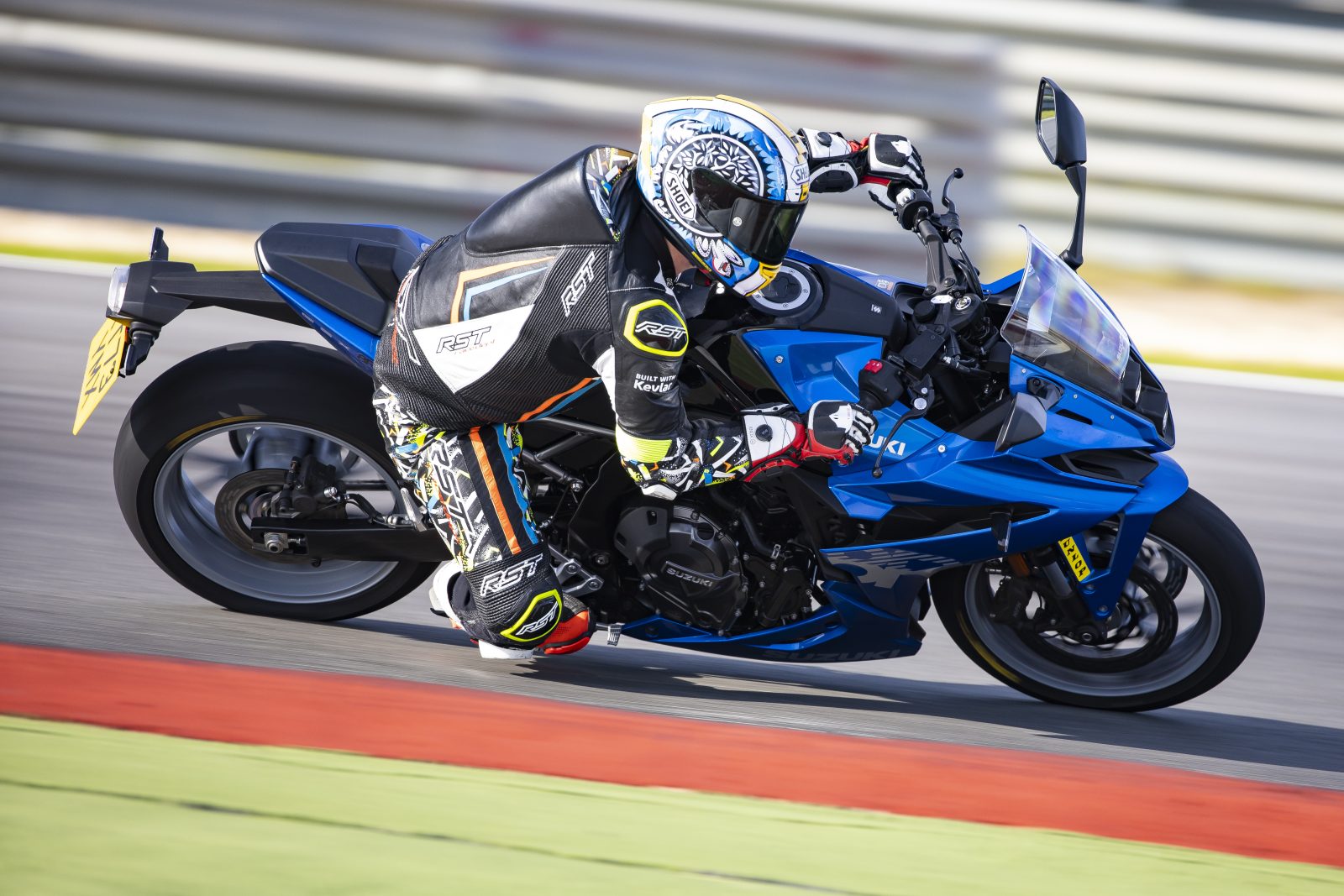
The 776cc parallel-twin engine, with its patented biaxial Cross Balancer system and 270-degree crank, remains unchanged. That means a healthy 78Nm of torque at a relatively low 6800rpm, and a peak power figure of 61kW (82hp) at 8500rpm. Internal gear ratios, the final gearing and SCAS clutch are also the same, along with wheel sizes, wheelbase, rake and trail.
In other words, the R should stop, turn and go very much like the S, although Suzuki engineers revealed that in testing the R accelerates quicker than the naked S, and top speed has improved too, due to the new and sleeker aerodynamics, which also necessitated minor tweaks to the R’s electronics. Like the S, there are three rider modes on board: Active (A), Basic (B) and Comfort (C), selectable via Suzuki’s Drive Mode Selector (SDMS). The traction control (STCS) level can be changed on the move, or even deactivated, but it isn’t lean-angle sensitive, while a two-way quickshifter is standard. Suzuki’s Low RPM Assist and Easy Start system also come as standard.
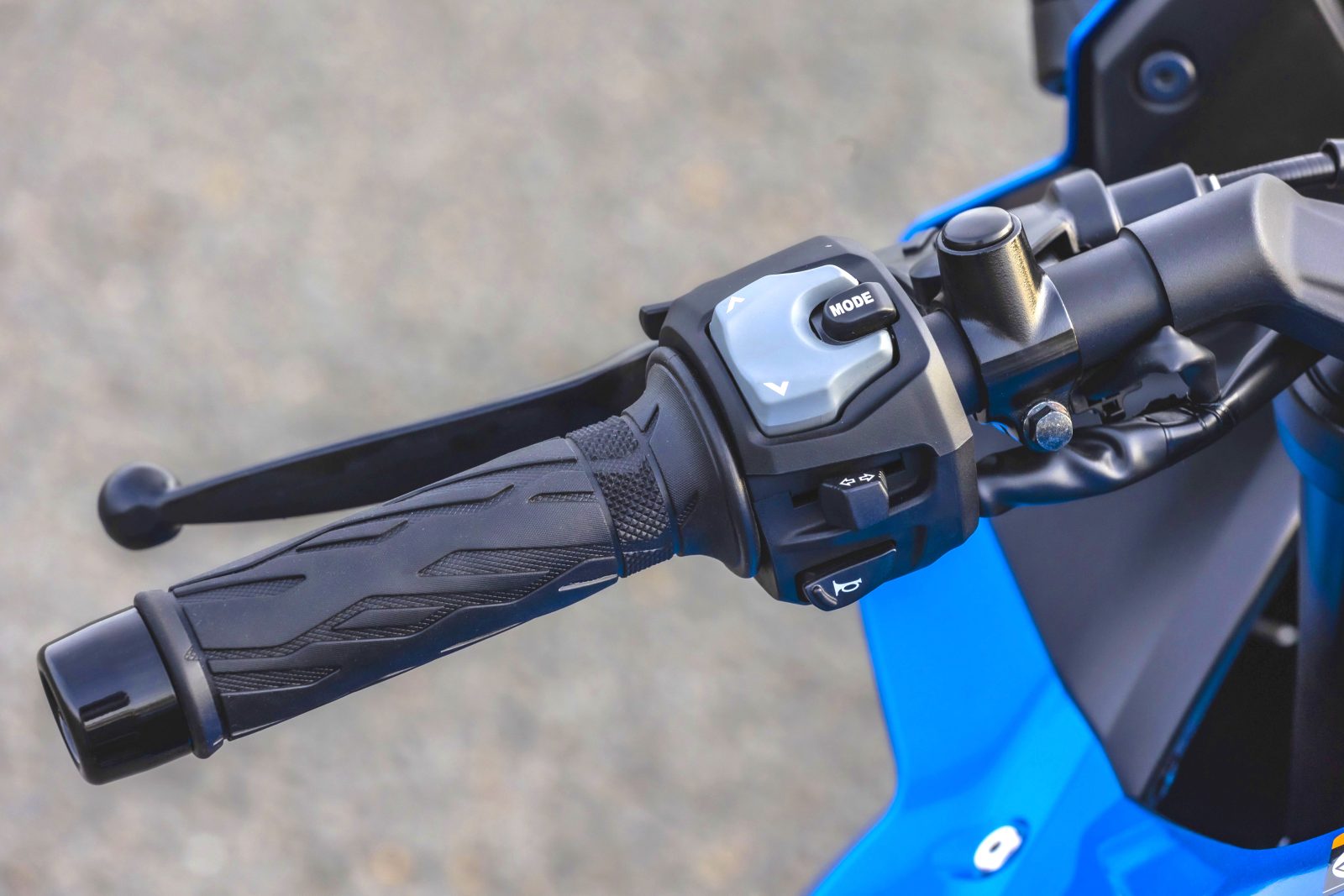
I was impressed by the torque of the parallel twin when we first rode the naked S last year in the south of France, on the famous Route Napolean. And as we left Monteblanco, ready for a 160km road ride of the R, the benefits of the relatively long-stroke engine became apparent once again. With B mode selected, the fueling was as clean as a whistle, especially at low rpm, with the engine almost impossible to stall thanks to the Low RPM Assist. The engine is smooth and throaty, that slick ride-by-wire combining with a lovely spread of torque that makes the GSX-8R a joy to ride. There’s no need to dance on that quickshifter; far better to allow the torque to do the work.
I deliberately rode a fast, flowing section of road using only the 8R’s midrange and, between 4000rpm and 7000rpm, the Suzuki twin was an effortless ride, with strong drive instantly available. Unlike some of the 8R’s competition, the midrange is the sweet spot, a place you want to be. You don’t have to rev it close to the redline to achieve genuine sportiness and speed. Select A mode and you’d expect more. But, in the real world and on a real road, it gave a sharpness to the throttle that added an edge I didn’t need. B mode is softer but delivers the same peak power and torque – as well as cracking wheelies (with the TC off) – and my default setting.
On the fast Monteblanco racetrack, with its long, near one-kilometre straight, I was a little concerned the Suzuki might be overwhelmed and run out of oomph, but on the tight infield section, it punched hard, driving out of second, third and fourth gear corners with serious intent for this class. On the straight, it showed between 210km/h and 215km/h every lap and was still accelerating when I grabbed the brakes. That snappier A mode came into its own in this environment, but in tricky conditions I’d probably go back to B for its softer initial feeling.
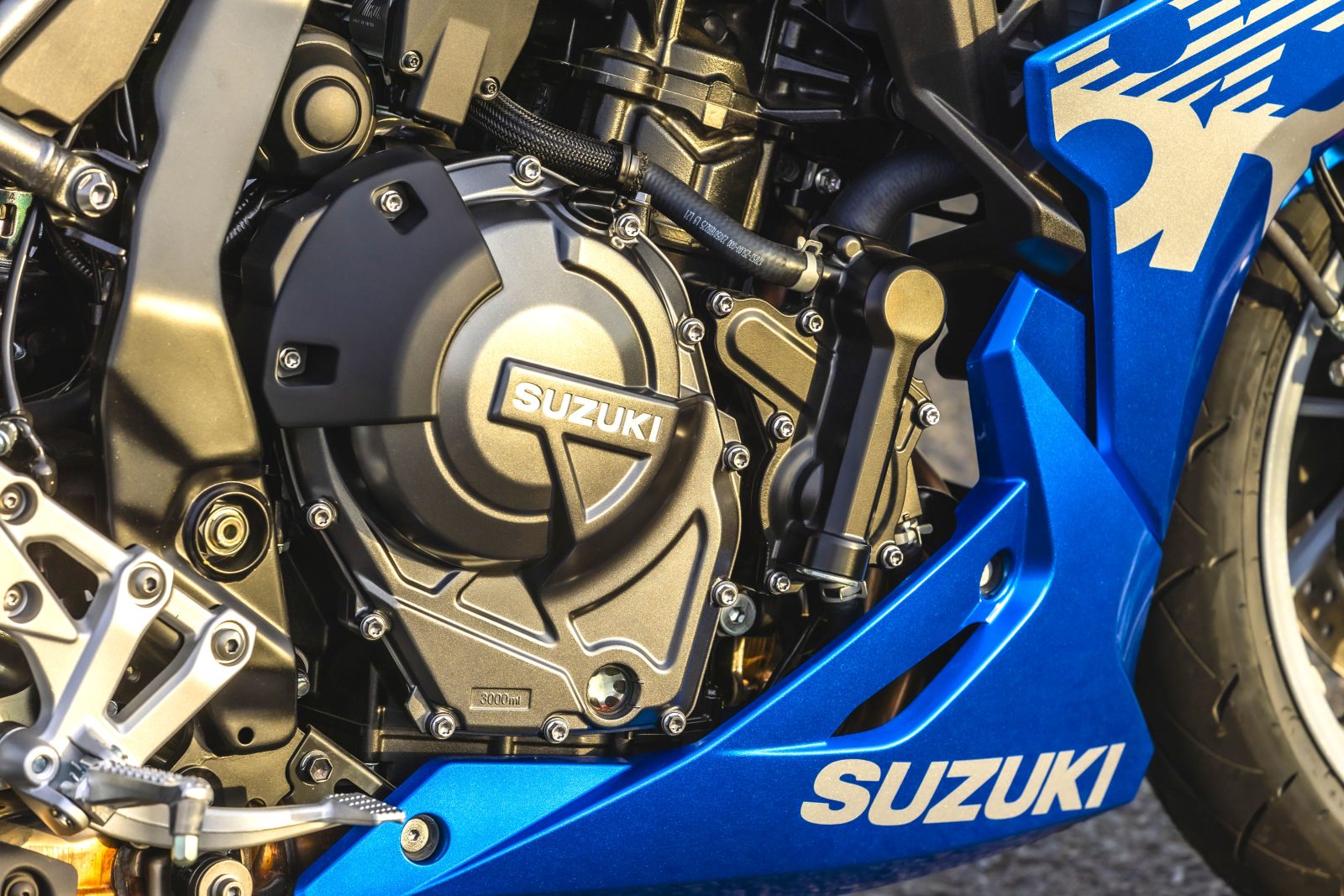
On track, the engine has enough drive to make the ride exciting, without being exhausting. You’re not overworked by its power; instead you have time to pick and choose your line. The quickshifter is slick enough at higher rpm but isn’t race spec, meaning I still used the clutch for rapid down changes. And while the traction control may not have lean sensitivity it can certainly be relied on. That said, I mainly had the system deactivated as the 8R’s long chassis and grippy Dunlop rubber (changed for the track) were loaded with grip and feel, and it was more fun without.
Although the engine and majority of parts have been transferred from the S, the R benefits from completely new suspension, which caters for a sportier riding position. The rider is farther forward with more weight over the front, which should give the GSX-8R owner heading for a trackday more front-end feel and confidence than a mate with a GSX-8S. The S’s suspension has been upgraded front and rear. Up front, the 41mm Showa Separate Function Fork – Big Piston fork is claimed to be lighter and more stable than the S’s teles, though they remain non-adjustable. On the rear, there’s a new Showa shock with preload adjustment, which I left standard (setting 4) on the road and adjusted to setting 6 and then the maximum 7 on track. Stopping this 205kg bundle of energy (it weighs 3kg more than its naked sibling, incidentally) is the same twin 310mm discs and Nissin four-pot caliper set-up found on the S. The ABS, which can’t be deactivated, is not lean sensitive.
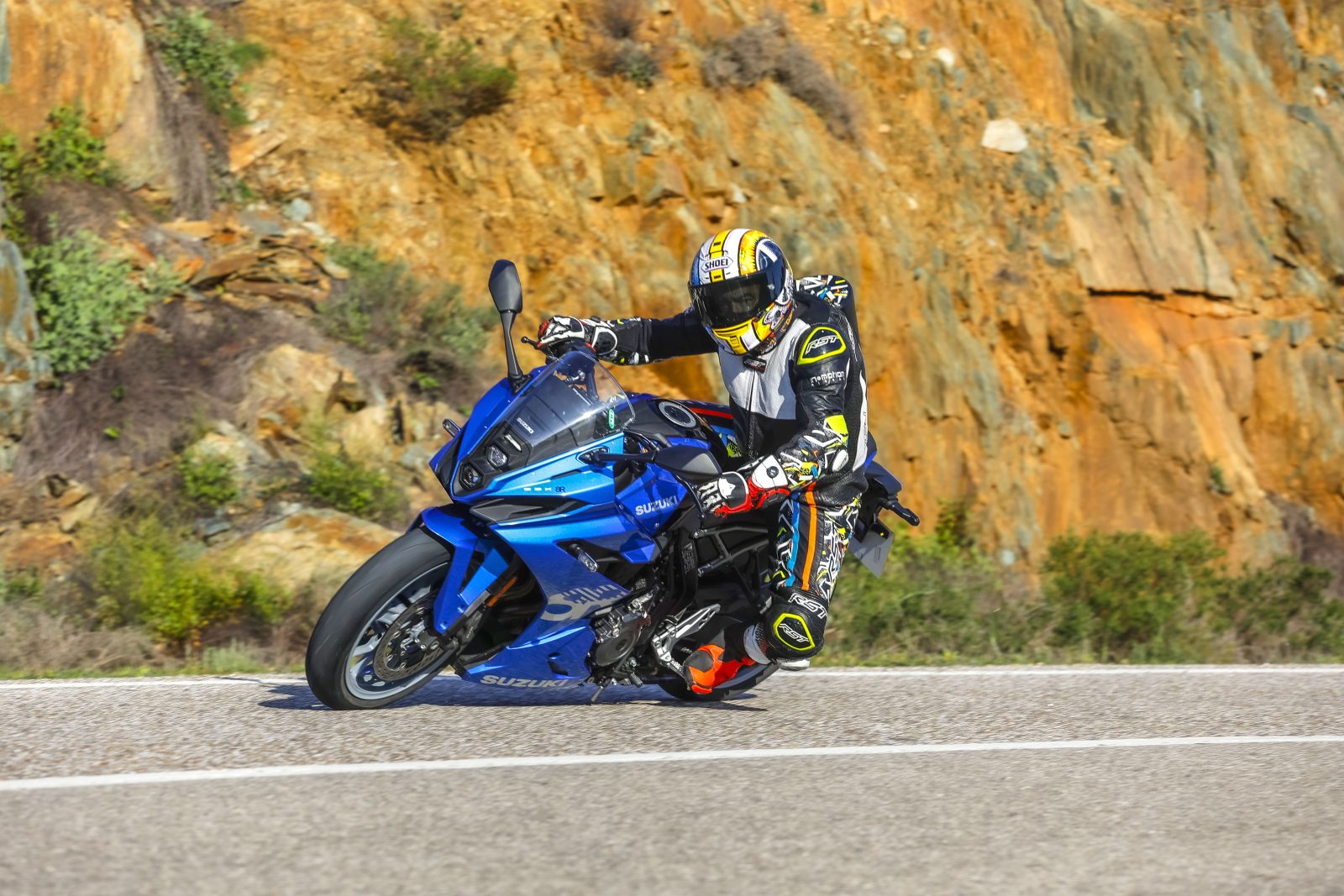
On the road the riding position is relaxed-sporty, with the same footpeg-to-seat ratio as the GSX-8S, meaning the ’pegs are neither higher nor farther back, as you might expect. The new aluminium ’bars, however, are farther forward and lower than the S, but mounted above the top yoke and about as radical as Postman Pat – notably upright for a sportsbike. In reality, there isn’t a dramatic difference between the two bikes’ ergonomics.
Out on the bumps and infinite variables of the open road, the ride is easy going and on the soft side, as you’d anticipate of an entry-level sportsbike. The new Showa front end feels planted, solid and very predictable, while the rear is softer but soaks up surface imperfections with ease. Ride the GSX-8R as it was designed and there is very little to fault. We had unseasonably cold conditions on our early-morning ride, and in this context the Dunlop RoadSport2 tyres never felt like they came up to full temperature and lacked outright feel. But as the Spanish sunlight warmed up the road, you could start to feel the contact patch and start to have fun, pushing the handling limits of the new R.
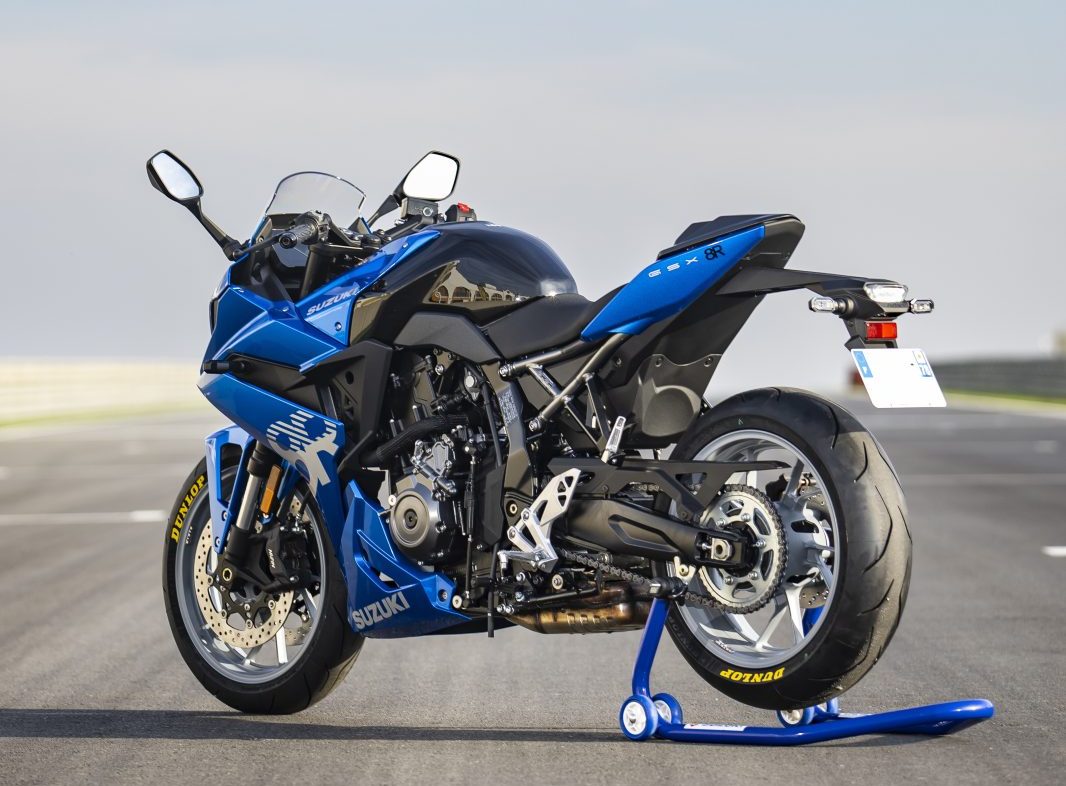
The front-end feel really is excellent, so too the R’s smooth turn-in. The fork doesn’t feel over worked and copes well with aggressive riding. Similarly, it can take the punishment of rough roads without complaint. At the rear, things are less clear cut. The new Showa shock copes well if you ride smoothly but add a little aggression and it lacks support, while the damping struggles with rough terrain. You don’t have to push too hard to get it in a tangle either, and it’s not long before the ’pegs start to tickle the road.
Entering the Monteblanco racetrack for the first time, I didn’t have high expectations for the new R’s suspension, as I’d already brushed up against its sporting limitations on the road. But I was wrong. With sportier Dunlop SportSmart TT rubber fitted and that extra spring preload added, the Suzuki felt very different. The Showa unit now had more control, the tyres gave greater feedback and warmed up quickly. With more preload added to the rear, the steering was a little faster too, and the handling limitations were simply the lack of ground clearance, not the shock or a lack of feel.
GAME ON
The arrival of the GSX-8R confirms how awesome it is to see an exciting new class of affordable, middleweight sportsbikes emerging, one that didn’t really exist just a few years ago. Arguably this class was created when racers started modifying their Kawasaki Z650s and Suzuki SV650s, and now we have a plethora of exciting bikes which hopefully will attract a new, young audience in the same way many of us were drawn to 250cc two-strokes and exciting 400cc four-strokes in the 1990s.
The Suzuki is certainly up against some tough competition. The Aprilia RS660 has more peak power, is considerably lighter (by 22kg) with more advanced rider aids – but is expensive. You could argue that the Suzuki is more aligned with Honda’s 208kg CBR650R rather than Yamaha’s more sports-focused 188kg R7, but now we also have Triumph entering the fight with the yet untested Daytona 660 (201kg), and you could also argue Kawasaki is still in the fight with both the ZX-4RR (189kg) or Ninja 650 (193kg). What a great time to be coming into motorcycling.
SPECIFICATIONS
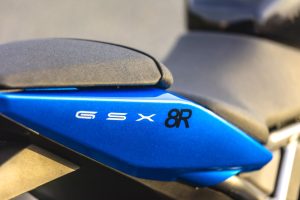
ENGINE
Capacity 776cc
Type Parallel-twin, DOHC, four valves per cylinder
Bore & stroke 84mm x 70mm
Compression ratio 12.8:1
Cooling Liquid
Fueling EFI
Transmission Six-speed
Clutch Wet, multi-plate, slipper-type
Final drive Chain
PERFORMANCE
Power 61kW (83hp) @ 8500rpm (claimed)
Torque 78Nm @ 6800rpm (claimed)
Top speed 225km/h (est)
Fuel consumption 4.3L/100km (measured)
ELECTRONICS
Type Not given
Rider aids ABS, traction control, Low RPM Assist and quickshifter
Rider modes A, B & C
CHASSIS
Frame material Steel
Frame type Twin spar
Rake 24°
Trail 104mm
Wheelbase 1465mm
SUSPENSION
Type Showa
Front: 43mm, non-adjustable upside-down fork, 130mm travel
Rear: Monoshock, adjustable preload, 130mm travel
WHEELS & BRAKES
Wheels Cast aluminium
Front: 17 x 3.0 Rear: 17 x 5.5
Tyres Dunlop Sportsmax Roadsport 2
Front: 120/70ZR17
Rear: 180/55ZR17
Brakes Nissin
Front: Twin 310mm discs, four-piston radial calipers
Rear: Single 240mm disc, single-piston caliper
DIMENSIONS
Weight 205kg (kerb, claimed)
Seat height 810mm
Width 770mm
Height Not given
Length 2115mm
Ground clearance145mm
Fuel capacity 14L
SERVICING AND WARRANTY
Servicing First: 1000km
Minor: 12,000km
Major: 24,000km
Warranty Two years, unlimited kilometres
BUSINESS END
Price From $14,990 (ride away)
Colour options Metallic Triton Blue Matt Sward Silver or Pearl Ignite Yellow
Contact suzukimotorcycles.com.au
TEST: ADAM CHILD PHOTOGRAPHY JASON CRITCHELL & JAMIES MORRIS

